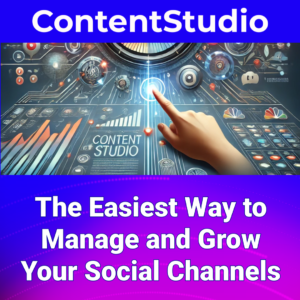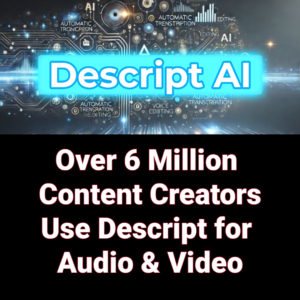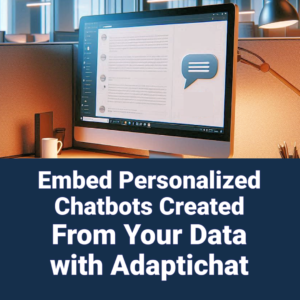Product placement has changed a lot over the years. It started in movies and TV shows, where brands paid to have their products featured. Now, it’s more advanced and integrated into different media. Today, product placement is about creating a smooth and engaging experience that connects with viewers.
In the past, product placement was often obvious and sometimes even distracting. Think of the classic scene in “E.T.” where Elliott lures the alien with Reese’s Pieces. While effective, such placements were often obvious and could take viewers out of the story. With digital media and advanced technologies, product placement has become more subtle and fits naturally into the content, enhancing the viewing experience.
The Role of AI in Modern Marketing
Artificial Intelligence (AI) is changing marketing in amazing ways. AI can analyze lots of data, predict what consumers will do, and create personalized content. One exciting development is using AI to create hyper-realistic images for product placement.
AI-generated imagery is revolutionizing marketing. Marketers can tailor such images to specific demographics, enhancing relevance and engagement. By analyzing data to discern audience preferences, AI enables marketers to craft visuals that resonate with individual viewers.
Understanding AI-Generated Images
What Are AI-Generated Images?
AI-generated images are visuals created by artificial intelligence algorithms that look like real photographs. These images can show scenes or objects that don’t exist in reality, offering endless possibilities for creative marketing. AI-generated images are made using advanced technologies like machine learning and neural networks.
The Technology Behind AI-Generated Images
Machine Learning and Neural Networks
Machine learning and neural networks are the core of AI-generated images. These technologies help AI learn from large datasets and create realistic images. Machine learning involves training AI algorithms on lots of data, allowing them to recognize patterns and make predictions. Neural networks mimic the human brain’s structure and function, helping AI process information and create images like humans do.
Generative Adversarial Networks (GANs)
Generative Adversarial Networks (GANs) are a type of AI with two neural networks competing against each other. One network generates images, while the other evaluates them, leading to highly realistic visuals. GANs have been key in advancing AI-generated images, allowing for the creation of images that look almost like real photographs.
Benefits of AI-Generated Images for Marketers
Cost-Effectiveness
AI-generated images can cut costs related to traditional photoshoots and graphic design. Marketers can create high-quality visuals with no need for expensive equipment or professional photographers. This cost-effectiveness lets brands use their budgets more efficiently and invest in other marketing areas.
Speed and Efficiency
AI can generate images quickly, letting marketers respond to trends and opportunities in real-time. This speed and efficiency are crucial in the fast-paced world of digital marketing. With AI-generated images, marketers can create and update visuals on the fly, keeping their content fresh and relevant.
Customization and Personalization
AI-generated images can be tailored to specific audiences, making them more relevant and engaging. Marketers can create personalized visuals that connect with individual viewers, enhancing the overall impact of their campaigns. This level of customization helps brands build stronger relationships with their audiences.
Tailored Product Scenes with AI
Analyzing Target Audience Data
AI can analyze data from various sources to understand the preferences and behaviors of target audiences. This information is used to create product scenes that appeal to specific groups. By using AI’s data analysis capabilities, marketers can gain valuable insights into their audiences and create visuals that match their interests and preferences.
Creating Ideal Product Scenes
Case Study: Electric SUV in Various Settings
Imagine an electric SUV being shown in different settings, like a lush forest or an eco-friendly home. AI can create these scenes based on individual viewers’ preferences, making the product more appealing and relevant. For example, a viewer interested in sustainability might see the SUV in a natural, eco-friendly setting. A viewer who values luxury might see the SUV in a high-end urban environment. This level of customization helps brands create visuals that connect with their audiences and drive engagement.
Enhancing Viewer Engagement
By creating tailored product scenes, AI can boost viewer engagement. Personalized visuals are more likely to capture attention and drive interest, leading to higher conversion rates. When viewers see products in settings that match their interests and preferences, they are more likely to connect with the brand and take action. This increased engagement can lead to higher sales and stronger brand loyalty.
Personalized Virtual Showrooms
Digital Insertion of Products Post-Production
AI allows for the digital insertion of products into media content after production. This means marketers can add products to existing videos, images, or virtual environments, creating seamless and engaging experiences. For example, a clothing brand could use AI to insert its latest collection into a popular TV show or movie, letting viewers see the products in action and get a sense of how they look and feel.
Creating Unique Viewer Experiences
Examples of Personalized Virtual Showrooms
Personalized virtual showrooms can offer unique experiences for each viewer. For example, an online furniture store could use AI to create virtual rooms tailored to individual customers’ tastes and preferences. By letting customers see how furniture would look in their own homes, the store can provide a more immersive and engaging shopping experience. This level of personalization helps customers make more informed purchasing decisions and increases their satisfaction with the brand.
Benefits for E-commerce and Retail
Personalized virtual showrooms can greatly enhance the online shopping experience. By providing tailored visuals, AI can help customers visualize products in their own spaces, increasing the likelihood of purchase. This can be especially beneficial for e-commerce and retail brands, as it allows them to create more engaging and interactive shopping experiences. By using AI-generated images, brands can stand out from their competitors and build stronger relationships with their customers.
Enhancing Brand Visibility with AI-Generated Images
Making Product Placements More Engaging
AI-generated images can make product placements more engaging by creating visually stunning and relevant content. This can help brands stand out in a crowded market and capture the attention of potential customers. By using AI to create high-quality visuals, brands can enhance their overall marketing strategy and drive better results.
Increasing Relevance to Individual Viewers
Case Study: AI in Seasonal Promotions
AI can be used to create personalized seasonal promotions. For example, a clothing brand could use AI-generated images to showcase its winter collection in various festive settings, tailored to different audience segments. By creating visuals that connect with individual viewers, the brand can increase its relevance and drive higher engagement. This level of personalization helps brands build stronger relationships with their customers and drive better results.
The New Era of Product Placement
AI in Social Media Advertising
Platforms like TikTok and YouTube
AI is changing product placement on social media platforms like TikTok and YouTube. By creating realistic digital versions of products, AI can seamlessly integrate them into user-generated content, making advertisements more engaging and less intrusive. This can help brands reach a wider audience and drive better results. For example, a beauty brand could use AI to insert its products into popular makeup tutorials on YouTube, letting viewers see the products in action and get a sense of how they work.
Startups Leading the Way
Spotlight on Rembrand
Startups like Rembrand are leading the way in AI-driven product placement. These companies are developing innovative technologies that make it easier to insert digital products into videos, creating new opportunities for marketers. By using AI, these startups are helping brands create more engaging and effective marketing campaigns. For example, Rembrand’s technology allows brands to insert their products into existing videos, creating seamless and engaging experiences for viewers.
AI in Marketing Campaigns
Creating Stunning Visuals for Product Launches
AI-generated images are being used to create stunning visuals for product launches. These images can be customized to reflect the brand’s identity and appeal to target audiences, making the launch more impactful. By using AI to create high-quality visuals, brands can enhance their overall marketing strategy and drive better results. For example, a tech company could use AI-generated images to showcase its latest smartphone in various settings, letting viewers see the product in action and get a sense of its features and capabilities.
Updating Themes and Promotions Quickly
Case Study: AI in Holiday Campaigns
AI allows marketers to quickly update themes and promotions without needing new photoshoots. For example, a brand could use AI-generated images to create holiday-themed visuals, keeping their marketing fresh and relevant. This can be especially beneficial for seasonal promotions, as it lets brands respond to trends and opportunities in real-time. By using AI, brands can create more engaging and effective marketing campaigns.
AI-Driven Software in Product Placement
Key Technologies in AI-Driven Product Placement
Computer Vision and Film Analysis
Computer vision and film analysis are key technologies in AI-driven product placement. These tools help AI understand and analyze visual content, making it possible to insert products seamlessly into media. By using these technologies, brands can create more engaging and effective marketing campaigns. For example, a fashion brand could use computer vision to analyze popular TV shows and movies, finding opportunities for product placement and creating visuals that connect with viewers.
3D Modeling and Video Compositing
3D modeling and video compositing are used to create realistic digital versions of products. These technologies help AI generate high-quality visuals that can be integrated into various media formats. By using 3D modeling and video compositing, brands can create more engaging and effective marketing campaigns. For example, a car manufacturer could use 3D modeling to create realistic visuals of its latest model, letting viewers see the car in action and get a sense of its features and capabilities.
Contextual Targeting and Real-Time Optimization
Contextual targeting and real-time optimization are essential for effective AI-driven product placement. These technologies ensure that products are placed in the most relevant and engaging contexts, maximizing their impact. By using contextual targeting and real-time optimization, brands can create more engaging and effective marketing campaigns. For example, a food brand could use contextual targeting to find popular cooking shows and insert its products into relevant scenes, creating a seamless and engaging experience for viewers.
Streamlining Collaboration and Revenue Streams
AI-driven software can streamline collaboration between marketers, designers, and content creators. By automating many aspects of the creative process, AI can help teams work more efficiently and open new revenue streams. For example, a marketing team could use AI-driven software to create high-quality visuals for a product launch, letting them focus on other aspects of the campaign. This can help brands create more engaging and effective marketing campaigns and drive better results.
Scaling Growth with AI in Marketing
Leveraging Existing Product Content
AI can use existing product content to create new and engaging visuals. This lets marketers maximize the value of their content and reach a wider audience. By using AI to create high-quality visuals, brands can enhance their overall marketing strategy and drive better results. For example, a beauty brand could use AI to create new visuals for its existing product line, letting them reach new customers and drive higher engagement.
Optimizing for Various Marketing Channels
Dynamic and Personalized Marketing Collateral
AI can optimize marketing collateral for various channels, creating dynamic and personalized content that connects with different audience segments. This can help brands achieve better results across multiple platforms. For example, a clothing brand could use AI to create personalized visuals for its social media channels, keeping its content fresh and relevant. By using AI, brands can create more engaging and effective marketing campaigns and drive better results.
Conclusion
The Future of AI in Product Placement
The future of AI in product placement looks promising. As AI technology continues to evolve, it will offer even more opportunities for marketers to create personalized and engaging content. By using AI, brands can enhance their overall marketing strategy and drive better results. The possibilities are endless, and the future of AI in product placement is bright.
Final Thoughts and Recommendations
AI-generated images are revolutionizing product placement by offering highly personalized and dynamic advertising opportunities. Marketers should embrace this technology to stay ahead of the curve and connect with their audiences in new and innovative ways. By using AI, brands can create more engaging and effective marketing campaigns and drive better results. The future of AI in product placement is bright, and the possibilities are endless.
FAQs
What are AI-generated images?
AI-generated images are visuals created by artificial intelligence algorithms that look like real photographs. These images can show scenes or objects that don’t exist in reality, offering endless possibilities for creative marketing.
How can AI-generated images benefit marketers?
AI-generated images can benefit marketers by reducing costs, increasing speed and efficiency, and allowing for customization and personalization. These images can be tailored to specific audiences, making them more relevant and engaging.
What is the technology behind AI-generated images?
The technology behind AI-generated images includes machine learning, neural networks, and generative adversarial networks (GANs). These technologies help AI learn from large datasets and create realistic images.
How can AI be used to create personalized virtual showrooms?
AI can be used to create personalized virtual showrooms by analyzing data from various sources to understand the preferences and behaviors of target audiences. This information is used to create virtual rooms tailored to individual customers’ tastes and preferences.
What are the benefits of AI-driven product placement?
The benefits of AI-driven product placement include increased engagement, relevance, and effectiveness. AI can create high-quality visuals that connect with individual viewers, enhancing the overall impact of marketing campaigns.
What is the future of AI in product placement?
The future of AI in product placement looks promising. As AI technology continues to evolve, it will offer even more opportunities for marketers to create personalized and engaging content. The possibilities are endless, and the future of AI in product placement is bright.













